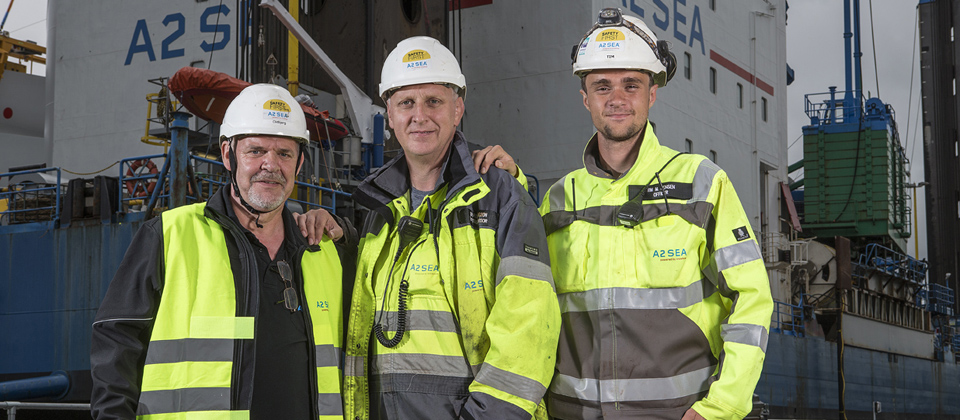
By Niklas Karlsson, Head of HSEQ, A2SEA A/S
A new Tower of Babel?
If you haven’t been on board an installation vessel while it’s in action, you may not be aware of just how challenging ensuring safety for everyone can be. Imagine, for example, that there are a number of teams on board, each responsible for a specific, well-defined task. Each team has a set number of steps to follow, both to complete the task and to do so as safely as possible.
Sound like just another day on the job? Nothing particularly challenging from a safety perspective? Now consider the fact that, at any one time, several of the teams may be working simultaneously. Suddenly, it’s not just about knowing what your own team is doing and when, but also needing to be aware of what everyone else may be doing that could impact on your own carefully defined procedures. You need to be able to identify hazards, manage risk and align your team to work safely and effectively along with everything else that’s going on.
To make things even more complex, this is a comparatively young industry. So many companies and their personnel can’t be expected to be able to draw upon years of offshore experience to guide their teams. And the regulatory environment is often patchworked – for example, marine regulations are relatively simply to identify and apply, but as soon as a vessel jacks up it has to follow land-based HSE requirements that vary from country to country. It all takes a lot of careful planning and staff training to ensure our “Safety First” standards of on-the-job awareness and protection can be achieved.
Of course, anyone working on board shouldn’t have to worry about all these issues. They need to focus on doing a great job of their specific piece of the installation jigsaw puzzle. Happily, they can. Because there is plenty that can be and is being done at A2SEA to ensure safety on board.

Niklas Karlsson, Head of HSEQ, A2SEA A/S
In our industry, safety tends to be something people try to address by creating mountains of paperwork that describes advisable or mandatory procedures for as many situations as possible. That’s useful, but the realities of this business are such that there are many different working situations on board a vessel, changing from one project to another and even from one turbine location to another. So it’s just not possible to create documented procedures for every situation – or train staff in all the variations.
And that’s exactly why the next phase of our safety culture programme will emphasize underlying human awareness and behaviour as a way to address both expected and unexpected workplace challenges.
The results are in
We began our safety culture programme in 2010, kicking off with a wide-reaching safety culture survey that would provide a benchmark with which to measure how well we tackled this key issue over the years to come. Now, in 2013, we have the results of the latest survey and can compare the data, guiding the focus of our program for the near future.
So what did the 2013 survey tell us? The first round of our safety culture program has achieved increased safety awareness and made safety top of the agenda. It has strengthened auditing procedures, improved reporting and communication internally and externally, and improved a range of processes governing what should be done if incidents should happen.
From these survey results, in combination with incident reports, we can see that the program’s focus now needs to be turned from the top-down “control systems” around safety to achieving further improvements on the organisational behaviour side. In fact, if we look at our incident statistics, we can see that around 50 percent relate to human behaviour, the attitudes involved and how these attitudes influence actions. That goes for slips, trips and falls, moving about under suspended loads and so on – problems that typically can’t be addressed by throwing more process documentation at them.
Fit for purpose
Safety management systems need to be fit for purpose rather than solely compliancy-oriented. And the right way to achieve this is to provide a “toolbox” where staff, clients and contractors working aboard our vessels can find the tools they need to reach a high level of process control. In that toolbox, roles, responsibilities, interfaces between people with different backgrounds and objectives need to be carefully described for clarity around who is doing what, when and why. People need to be able to get the right information at the right time. And the management systems of the various teams need to be brought together.
More than paperwork
All those painstakingly documented responsibilities have to translate to clear understandings of what people actually need to do, making the procedures operational and creating situational awareness for those doing the job rather than just more forms to fill out.
Bridging all of this and attaining total risk control is no easy task – but we’re well on the way, and I’m sure the new emphasis on human awareness and behaviour for the safety culture programme will make a major contribution.
Like this post? Subscribe now and get notified about new content!
